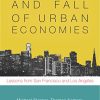(Ebook PDF) Biomechanics at Micro and Nanoscale Levels Volume III 1st Edition by Hiroshi Wada 9812708146 9789812708144 Full chapter
$50.00 Original price was: $50.00.$35.00Current price is: $35.00.
Biomechanics at Micro and Nanoscale Levels Volume III 1st Edition by Hiroshi Wada – Ebook PDF Instant Download/Delivery: 9812708146, 978-9812708144
Full dowload Biomechanics at Micro and Nanoscale Levels Volume III 1st Edition after payment

Product details:
ISBN 10: 9812708146
ISBN 13: 978-9812708144
Author: Hiroshi Wada
Biomechanics at Micro and Nanoscale Levels Volume III 1st Table of contents:
I. CELL MECHANICS
The effect of streptomycin and gentamicin on outer hair cell motility
- B. Currall, X. Wang and D. Z.
- Introduction
- Materials and Methods
- 2.1 Preparation of isolated OHCs
- 2.2 Whole-cell voltage-clamp recording
- 2.3 Somatic motility measurements
- 2.4 Nonlinear capacitance measurements
- Results
- 3.1 Extracellular application of streptomycin and gentamicin
- 3.2 Intracellular application of streptomycin
- Discussion
- Acknowledgment
- References
Mechanotransduction in bone cell networks
- X. E. Guo, E. Takai, X. Jiang, Q. Xu, G. M. Whitesides, J.
- Introduction
- Materials and Methods
- 2.1 Microcontact printing for the formation of controlled bone cell networks
- 2.2 Optimization of geometric parameters for bone cell network formation
- 2.3 Assessment of gap junction formation
- 2.4 Single-cell nanoindentation using atomic force microscopy
- Results
- 3.1 Assessment of cell patterning
- 3.2 Calcium wave propagation in bone cell networks
- Discussion
- Conclusions
- Acknowledgments
- References
Intracellular measurements of strain transfer with texture correlation
- C. L. Gilchrist, F. Guilak
- Introduction
- Materials and Methods
- 2.1 Primary cell isolation and culture
- 2.2 Stretch experiments
- 2.3 Displacement measurement and strain calculations
- 2.4 Intracellular strain calculations following stretch
- Results
- 3.1 Cell stretching experiments
- Discussion
- Acknowledgments
- References
II. CELL RESPONSE TO MECHANICAL STIMULATION
Identifying the mechanisms of flow-enhanced cell adhesion via dimensional analysis
- C. Zhu, V. I. Zarnitsyna
- Introduction
- Transport Governs Flow-enhanced Cell Tethering
- 2.1 Conceptual scheme of tethering process
- 2.2 Enhancing tethering by mean sliding velocity
- 2.3 Enhancing tethering by Brownian motion
- 2.4 Enhancing tethering by molecular diffusion
- Catch Bonds Govern Flow-enhanced Cell Rolling
- 3.1 Conceptual scheme of rolling process
- 3.2 Rolling velocity scales with tether force
- 3.3 Off-rate curves and rolling velocity curves correlate and scale similarly
- Discussion and Conclusion
- Acknowledgments
- References
A sliding-rebinding mechanism for catch bonds
- J. Lou, C. Zhu, T. Yago, and R. P. McEver
- Introduction
- Structures of Selectins and Selectin-Ligand Complexes
- MD Simulations of Selectins and Selectin-Ligand Complexes
- 3.1 Free dynamics simulations of selectin lectin-EGF domains
- 3.2 SMD simulations of unbinding of selectin-ligand complexes
- Sliding-Rebinding Mechanism and Pseudoatom Representation
- Testing the Sliding-Rebinding Mechanism by Mutagenesis Studies
- Discussion and Conclusion
- Acknowledgments
- References
Role of external mechanical forces in cell signal transduction
- S. R. K. Vedula, C. T. Lim, T. S. Lim
- Introduction
- 1.1 Mechanotransduction process
- Mechanosensing
- 2.1 Mechanosensitive or stretch sensitive ion channels
- 2.1.1 Models for the functioning of MS channels
- 2.2 Integrins
- 2.3 Intercellular adhesion molecules
- 2.4 Cytoskeleton
- 2.5 Other receptors (GPCR and RTK)
- 2.6 Membrane fluidity
- Mechanotransduction
- 3.1 Mechanosensitive (MS) ion channels
- 3.1.1 Elevation of intracellular calcium levels
- 3.1.2 Mechanosensitive (MS) ATP Release
- 3.2 Integrins, Focal Complex (FC) & Focal Adhesion (FA)
- 3.2.1 FAK pathway
- 3.2.2 Fyn/Shc pathway
- 3.2.3 Rho family GTPases
- 3.2.4 Tyrosine phosphatases
- Mechanoresponse
- Conclusion
- References
- Introduction
III. TISSUE ENGINEERING
Evaluation of material property of tissue-engineered cartilage by magnetic resonance imaging and spectroscopy
-
- Introduction
- Materials and Methods
- 2.1 Isolation of chondrocytes and preparation of chondrocyte/agarose constructs
- 2.2 1H-NMR spectroscopy
- 2.3 FCD measurements by Gd-DTPA2- enhanced MRI
- 2.4 Histological analysis
- 2.5 Determination of total sulfated glycosaminoglycan contents
- Results
- Discussion
- Acknowledgments
- References
Scaffolding technology for cartilage and osteochondral tissue engineering
- G. Chen, N. Kawazoe, T. Takagi
- Introduction
- Hybrid Porous Scaffolds
- Biphasic Porous Scaffold
- Cartilage Tissue Engineering Using Hybrid Scaffolds
- Osteochondral Tissue Engineering Using Hybrid and Biphasic Scaffolds
- Conclusions
- Acknowledgments
- References
IV. COMPUTATIONAL BIOMECHANICS
MRI measurements and CFD analysis of hemodynamics in the aorta and the left ventricle
- M. Nakamura, S. M.
- Introduction
- Methods
- 2.1 Measurement of the aortic geometry and flow using MRI
- 2.2 Aorta models
- 2.3 Left ventricle model
- 2.4 Blood flow model
- 2.5 Simulation condition and procedure
- 2.6 Hemodynamics factors
- Results
- 3.1 Importance of the inflow condition at the aorta
- 3.1.1 Flow simulation with an integrated model of the left ventricular and the aorta
- 3.1.2 Measurement of the flow dynamics just above the aortic annulus
- 3.2 Hemodynamics in the aorta models with/without tapering and branches
- Discussion
- 4.1 Significance of the inflow condition on the aortic hemodynamics
- 4.2 Significance of the branches and tapering of the aorta
- Conclusions
- Acknowledgments
- References
A fluid-solid interactions study of the pulse wave velocity in uniform arteries
- T. Fukui, Y. Imai, K. Miyazaki
- Introduction
- Methods
- 2.1 Numerical models
- 2.2 Governing equations and computational code
- 2.3 Boundary conditions
- Results
- 3.1 Wave propagation
- 3.2 Velocity waveforms
- 3.3 Pulse wave velocity
- 3.4 PWV comparison between computation and theoretical values
- Discussion
- Conclusions
- Acknowledgments
- References
Rule-based simulation of arterial wall thickening induced by low wall shear stress
- S. Wada, M. Nakamura
- Introduction
- Methods
- 2.1 Initial geometry of the blood vessel
- 2.2 Blood flow analysis
- 2.3 Thickening of the vessel wall
- 2.4 Procedure of computer simulation
- Results and Discussion
- Conclusions
People also search for Biomechanics at Micro and Nanoscale Levels Volume III 1st:
stanford biomechanics lab
cervical biomechanics
micro and nano biomedical engineering
dynamic biomechanics
exponent biomechanics
Tags:
Hiroshi Wada,Biomechanics,Micro,Nanoscale,Levels,Volume III 1st


